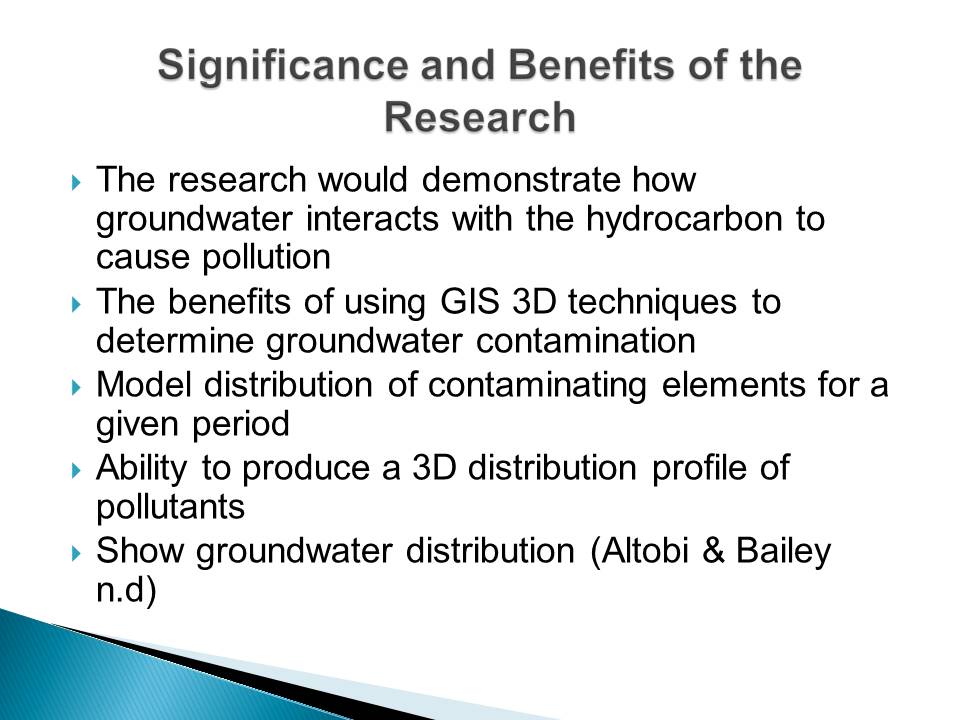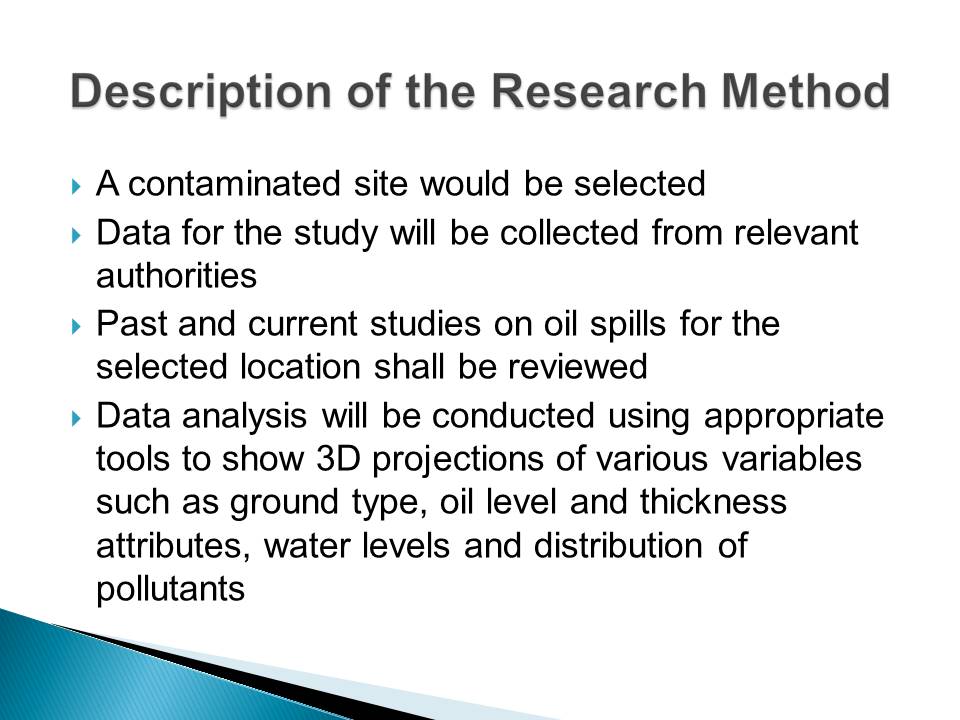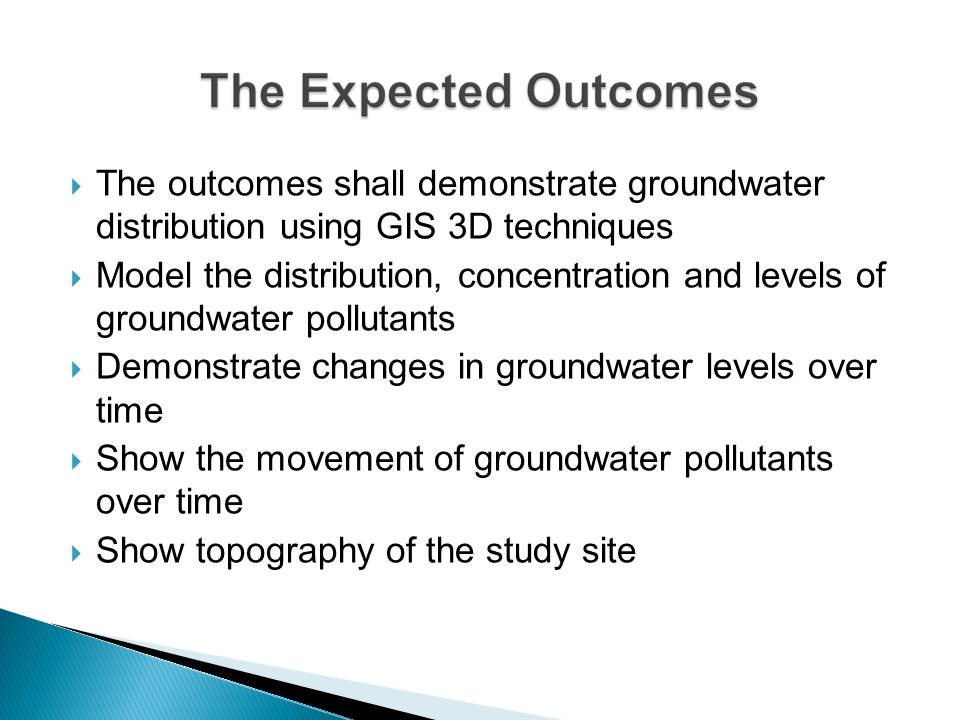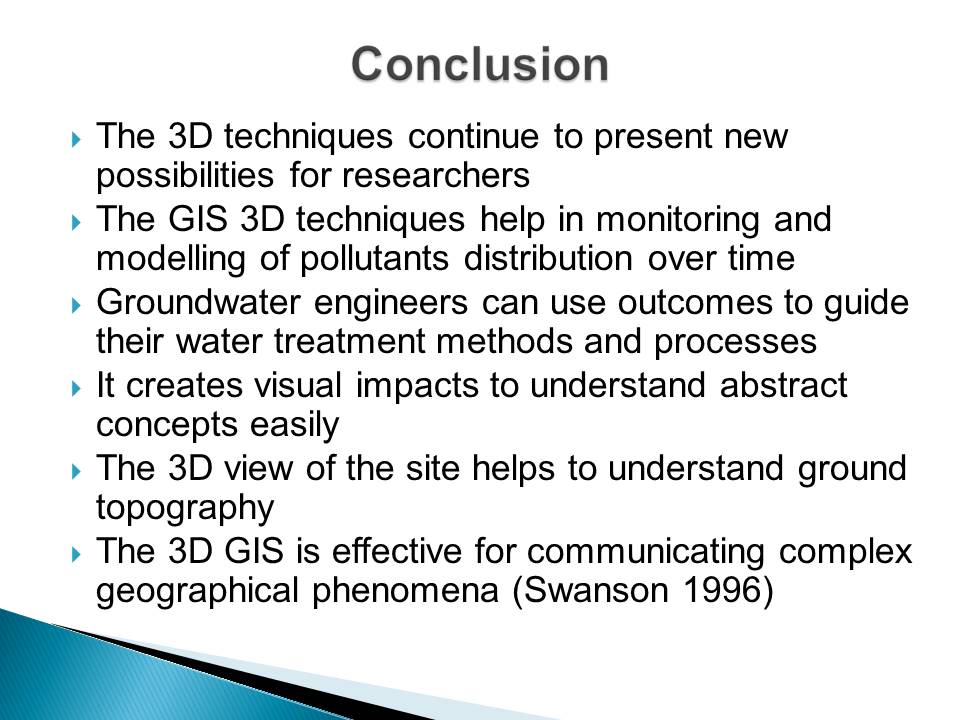Introduction
- The growth in population has given significance to groundwater resources.
- The groundwater resources however face many negative anthropogenic effects such as hydrocarbon contamination (oil spills).
- Oil pills negatively affect the environment, including groundwater resources.
- The clean up process is usually difficult and expensive.
- The 3D monitoring and modeling techniques can be used to determine groundwater contamination (Altobi & Bailey n.d).

Significance and Benefits of the Research
- The research would demonstrate how groundwater interacts with the hydrocarbon to cause pollution.
- The benefits of using GIS 3D techniques to determine groundwater contamination.
- Model distribution of contaminating elements for a given period.
- Ability to produce a 3D distribution profile of pollutants.
- Show groundwater distribution (Altobi & Bailey n.d).

Description of the Research Method
- A contaminated site would be selected.
- Data for the study will be collected from relevant authorities.
- Past and current studies on oil spills for the selected location shall be reviewed.
- Data analysis will be conducted using appropriate tools to show 3D projections of various variables such as ground type, oil level and thickness attributes, water levels and distribution of pollutants.

The Expected Outcomes
- The outcomes shall demonstrate groundwater distribution using GIS 3D techniques.
- Model the distribution, concentration and levels of groundwater pollutants.
- Demonstrate changes in groundwater levels over time.
- Show the movement of groundwater pollutants over time.
- Show topography of the study site.

Conclusion
- The 3D techniques continue to present new possibilities for researchers.
- The GIS 3D techniques help in monitoring and modelling of pollutants distribution over time.
- Groundwater engineers can use outcomes to guide their water treatment methods and processes.
- It creates visual impacts to understand abstract concepts easily.
- The 3D view of the site helps to understand ground topography.
- The 3D GIS is effective for communicating complex geographical phenomena (Swanson 1996).

Reference List
Altobi, Y & Bailey, D n.d., The use of GIS 3D tools to tackle ground water contamination at Bemidji, MN. Web.
Swanson, J 1996, The Three Dimensional Visualization & Analysis of Geographic Data. Web.